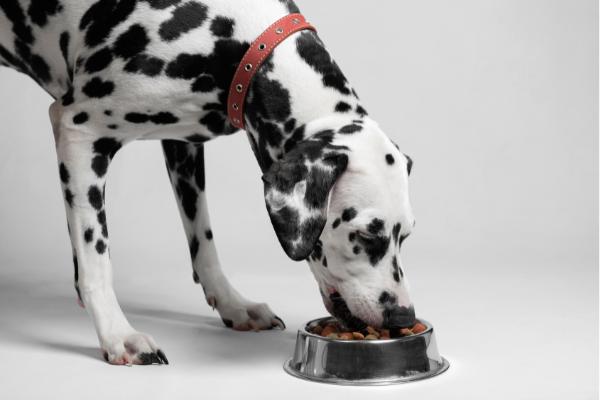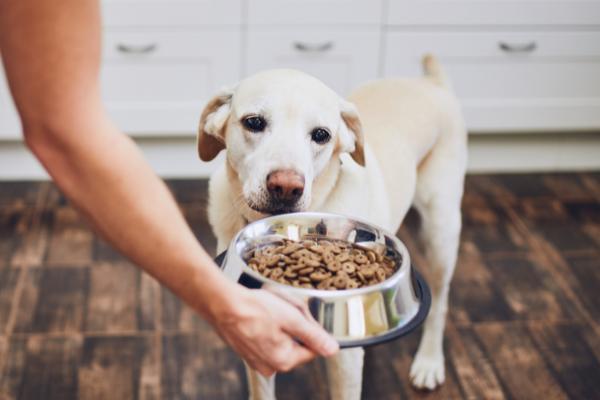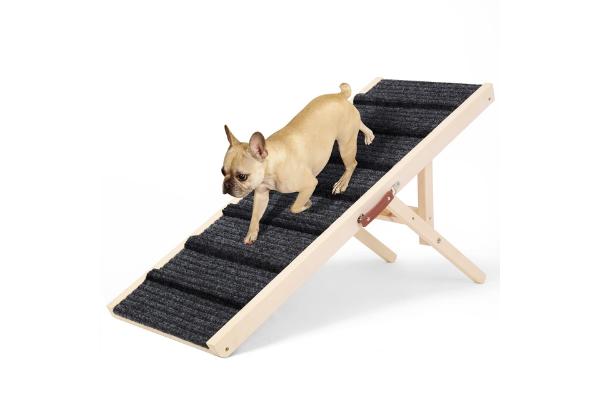Introduction
Brief overview of canine arthritis
Canine arthritis is a common condition that affects millions of dogs worldwide. It’s a degenerative joint disease that causes inflammation, pain, and stiffness in the joints, making it challenging for dogs to move and enjoy their daily activities. Learn more about canine arthritis from the American Kennel Club (AKC).
Importance of managing joint health in dogs
Proper management of joint health is crucial for ensuring your dog’s overall well-being, especially as they age. By taking proactive steps, you can help minimize your dog’s discomfort, maintain their mobility, and improve their quality of life.

Understanding Canine Arthritis
Definition and causes
Canine arthritis refers to the inflammation and deterioration of a dog’s joints. It’s often caused by factors such as aging, injury, or genetics. Over time, the cartilage that cushions the joints wears away, leading to bone-on-bone contact and discomfort.
Common symptoms and early signs
Some common signs of arthritis in dogs include stiffness, limping, reluctance to move, swelling around the joints, and sensitivity to touch. If you notice any of these symptoms in your dog, it’s essential to consult with a veterinarian for proper diagnosis and treatment.

Factors contributing to arthritis development in dogs
Arthritis can develop due to various factors, including obesity, joint injuries, genetic predisposition, and infections. It’s essential to be aware of these factors and work with your veterinarian to minimize your dog’s risk.
Tip 1: Diet and Nutrition for Optimal Joint Health
Benefits of a balanced diet
A balanced diet ensures that your dog receives all the necessary nutrients to maintain overall health, including joint health. Proper nutrition can help slow down the progression of arthritis and manage its symptoms.
Specific nutrients for joint health
Omega-3 fatty acids
Omega-3 fatty acids, found in fish oil, can help reduce inflammation and alleviate joint pain in dogs with arthritis. Discover the benefits of Omega-3 fatty acids for dogs on PetMD.
Glucosamine and chondroitin
Glucosamine and chondroitin are essential components of cartilage. Supplements containing these compounds can support joint health and alleviate arthritis symptoms. Find out more about glucosamine and chondroitin for dogs at VCA Animal Hospitals.
Antioxidants and vitamins
Antioxidants and vitamins, such as vitamin C and E, can help combat oxidative stress and support joint health in dogs.

Considering dietary supplements
Supplements can be an excellent addition to your dog’s diet to support joint health. However, it’s crucial to consult with your veterinarian before introducing any new supplements to your dog’s regimen.
Consulting with a veterinarian for personalized recommendations
Every dog is unique, and their nutritional needs can vary. It’s essential to work with your veterinarian to develop a personalized diet plan that best supports your dog’s joint health.

Tip 2: Maintaining a Healthy Weight
Impact of excess weight on joints
Excess weight puts additional strain on your dog’s joints, worsening arthritis symptoms. Maintaining a healthy weight is crucial for minimizing joint pain and discomfort.
Strategies for weight management
Balanced diet
A balanced diet is crucial for maintaining a healthy weight. Ensure your dog’s diet is tailored to their age, size, and activity level.
Regular exercise
Regular exercise helps manage your dog’s weight and supports joint health. Choose low-impact activities that don’t strain the joints.
Monitoring weight and adjusting portions accordingly
Regularly monitor your dog’s weight and adjust their food portions as needed to maintain a healthy weight.

Working with a veterinarian for weight loss guidance
If your dog needs to lose weight, consult with your veterinarian for guidance on safe and effective weight loss strategies.
Tip 3: Appropriate Exercise and Activity
Importance of regular exercise for joint health
Regular exercise is vital for maintaining joint health and managing arthritis symptoms. It helps strengthen the muscles around the joints, improve flexibility, and support a healthy weight.

Considerations for exercise in dogs with arthritis
Low-impact activities
Low-impact activities like walking and gentle play are ideal for dogs with arthritis, as they put less stress on the joints.
Benefits of swimming and hydrotherapy
Swimming and hydrotherapy are excellent options for dogs with arthritis, as they provide a low-impact workout that supports joint health and reduces pain.
Adjusting exercise routine based on individual needs
It’s essential to tailor your dog’s exercise routine according to their specific needs, taking into account their age, breed, and arthritis severity.
Monitoring your dog’s response to exercise
Keep an eye on your dog’s response to exercise, and adjust their routine as needed. If they appear to be in pain or have difficulty moving, consult with your veterinarian for guidance.

Tip 4: Pain Management and Medications
Consulting with a veterinarian for appropriate medications
Your veterinarian can recommend suitable medications to manage your dog’s arthritis pain and reduce inflammation.
Non-steroidal anti-inflammatory drugs (NSAIDs)
NSAIDs are commonly prescribed for dogs with arthritis, as they help reduce inflammation and alleviate pain.
Alternative pain relief options
Natural remedies
Some natural remedies, such as turmeric and ginger, may help alleviate arthritis pain in dogs. Always consult your veterinarian before trying any natural remedies.
Acupuncture and massage
Acupuncture and massage therapy can provide pain relief and improve joint mobility in dogs with arthritis.
Prescription medications
In some cases, prescription medications may be necessary to manage your dog’s arthritis pain effectively. Your veterinarian can guide you on the best options for your pet.

Tip 5: Environmental Modifications for Comfort and Support
Providing orthopedic bedding
Orthopedic beds offer additional support and cushioning, which can help alleviate joint pain and promote restful sleep for dogs with arthritis.
Eliminating obstacles and slippery surfaces
Remove potential obstacles and slippery surfaces from your home to make it easier for your arthritic dog to move around comfortably and safely.
Using ramps and stairs to assist mobility
Ramps and stairs can help your dog navigate elevated surfaces, reducing strain on their joints.

Adjusting daily routine to accommodate arthritis symptoms
Be mindful of your dog’s limitations due to arthritis and adjust their daily routine to minimize discomfort and stress.
Monitoring Your Dog’s Joint Health Progress
Regular veterinary checkups
Schedule regular veterinary checkups to monitor your dog’s joint health and adjust their arthritis management plan as needed.
Communicating changes in your dog’s condition
Keep your veterinarian informed of any changes in your dog’s condition, as this information can help tailor their arthritis management plan.
Being patient with progress and adjusting strategies as needed
Managing arthritis in dogs is an ongoing process. Be patient with your dog’s progress and be prepared to adjust their care plan as needed.

Summary
Recap of essential tips for managing canine arthritis
To effectively manage canine arthritis, focus on providing a balanced diet, maintaining a healthy weight, engaging in appropriate exercise, managing pain with medications, and making environmental modifications for comfort and support.
Encouraging proactive care and attention to joint health
Proactive care and attention to joint health can significantly improve your dog’s quality of life, especially as they age. Be vigilant in monitoring their joint health and collaborate with your veterinarian to develop an effective arthritis management plan.
FAQs
Some signs that your dog may have arthritis include stiffness, limping, reluctance to move, swelling around the joints, and sensitivity to touch. If you observe these symptoms, consult your veterinarian for a proper diagnosis.
Arthritis is more common in older dogs, but it can affect dogs of any age. It’s essential to monitor your dog’s joint health throughout their life and consult your veterinarian if you notice any changes.
While there is no cure for arthritis, proper management can help slow down its progression and alleviate symptoms. A combination of diet, exercise, weight management, pain relief, and environmental modifications can significantly improve your dog’s quality of life.
While you can’t entirely prevent arthritis, you can take steps to minimize your dog’s risk. Maintaining a healthy weight, providing a balanced diet, engaging in regular exercise, and monitoring their joint health can help protect your dog from arthritis.
It’s crucial to strike a balance between keeping your dog active and not overexerting them. Focus on low-impact activities, such as walking, swimming, or hydrotherapy, which are easier on the joints. Monitor your dog’s response to exercise and adjust their routine as needed to prevent unnecessary strain on their joints.

In conclusion, managing your dog’s arthritis requires a comprehensive approach that includes a balanced diet, weight management, appropriate exercise, pain relief, and environmental modifications. By working closely with your veterinarian and monitoring your dog’s joint health, you can help improve their quality of life and keep them comfortable as they age.






